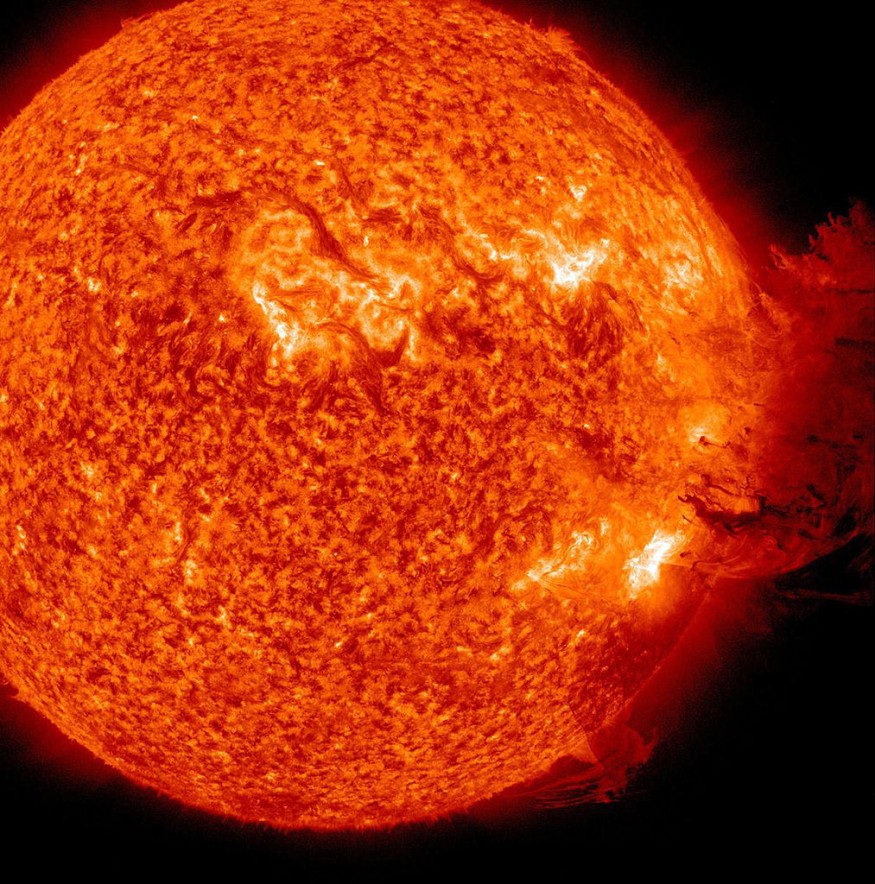A planet-sized sunspot from the Sun facing Earth and continuously growing is threatening our planet with a potential solar flare explosion in the coming hours or days, according to reports.
The sunspot named AR3085 from the active region of the Sun reportedly increased by 10-fold in the past two days as of Wednesday, August 24.
With this, an unprecedent solar storm could directly hit Earth at any moment.
Planet-Sized Sunspot

Live Science dubbed the sunspot to be a "planet-size" since it was barely a blip several days ago.
Currently, it has increased 10 times larger after it morphed into a pair of sunspots that each measure nearly the total diameter of Earth, according to SpaceWeather.com.
There have been several large explosions containing electromagnetic radiation seen from the Sun's surface and hurled towards space.
Fortunately, the mentioned solar flares fall under the C-class flares category, which is the weakest level out of a three-tier system used by space weather authorities.
Also Read: Solar Storm Alert: Fresh Geomagnetic Storm Warning Issued, Earth Expected to be Hit on Thursday
Sunspots and Solar Flares
For decades, both astronomers and space enthusiasts have mentioned the correlation between sunspots and solar flares, wherein the former reportedly serve as the gateway of the latter.
According to the National Aeronautics and Space Administration (NASA), sunspots appear as dark areas on the Sun's surface since they are relatively cooler than other parts of our solar system's only star.
Meanwhile, solar flares are considered to be a sudden outburst of energy caused by activities of magnetic field lines, including crossing, reorganizing, or tangling near sunspots.
NASA added that the motion caused by the magnetic fields is called solar activity, which depends on the different phases of the solar cycle.
Since solar activities have an impact on Earth, the US space agency emphasizes scientists are closely monitoring solar activity each day.
Solar Activity and Solar Storms
Since recordings of the solar cycle started in 1755, solar storms in the form of not only solar flares but also coronal mass ejection (CME), high-speed solar wind, and solar energetic particles, have been observed.
These space weather events have also released various hazards like geomagnetic storms, solar radiation storms, and radio blackouts, disrupting Earth's technology that rely on radio frequencies or satellite signals.
In 1859, one of history's strongest solar flares or largest solar storms known as "The Carrington Event" occurred on September 1 of that year.
It was the first-ever documented solar flare that impacted our planet, where it was struck by the powerful solar storm in the morning hours EDT (local time).
In recent years, scientists project that a recurrence of a solar storm as powerful as The Carrington Event will cause extreme damage to electrical and communication systems of the world today.
It can also cripple power grid and destroy orbiting satellites, according to Boston University.
In recent months, a relatively strong solar flare led to reported radio blackouts in some parts of Asia and Australia.
However, most of these disrupt affect the low or high frequencies of radio transmissions.
© 2025 NatureWorldNews.com All rights reserved. Do not reproduce without permission.





